Author:
Sara Rhodes
Date Of Creation:
18 February 2021
Update Date:
1 July 2024

Content
- Steps
- Method 1 of 3: On most Android devices
- Method 2 of 3: On Samsung Galaxy
- Method 3 of 3: How to reduce traffic consumption
- Tips
- Warnings
This article will show you how to turn off the traffic limit warning on your Android device. Keep in mind that this can be done on an Android device with activated mobile internet (access to the network via a SIM card).
Steps
Method 1 of 3: On most Android devices
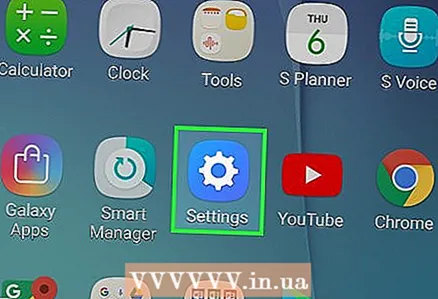 1 Launch the Settings app. With two fingers, swipe down from the top of the screen, and then tap the gear icon
1 Launch the Settings app. With two fingers, swipe down from the top of the screen, and then tap the gear icon  in the upper left corner of the menu.
in the upper left corner of the menu. 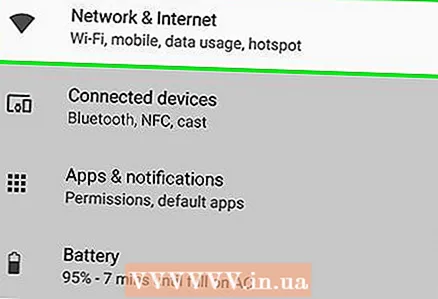 2 Click on Network and Internet. It's in the middle of the settings page.
2 Click on Network and Internet. It's in the middle of the settings page. - You may have to scroll down the menu to see this option.
 3 Tap Data transfer. You will find this option in the middle of the Network & Internet page.
3 Tap Data transfer. You will find this option in the middle of the Network & Internet page. 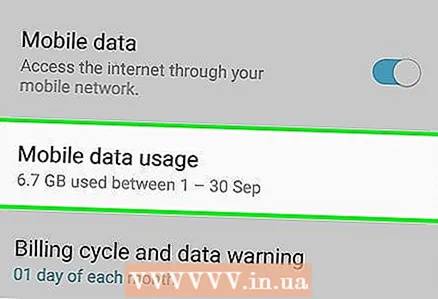 4 Click on Mobile traffic. You will find this option in the middle of the page. A menu will open.
4 Click on Mobile traffic. You will find this option in the middle of the page. A menu will open. - In Android Nougat (7.0), click Billing Cycle.
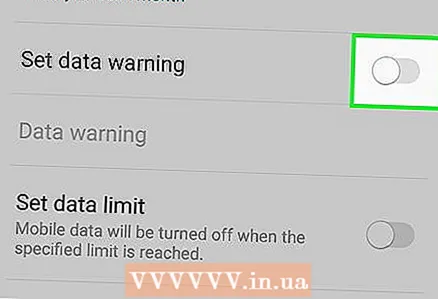 5 Click on the blue slider next to "Alert Settings"
5 Click on the blue slider next to "Alert Settings"  . It will turn gray
. It will turn gray  .
. 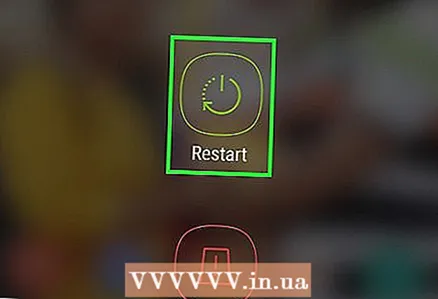 6 Follow the instructions on the screen. If you are prompted to confirm your decision or to restart your device, do so. Now the device will not notify you about the traffic limit.
6 Follow the instructions on the screen. If you are prompted to confirm your decision or to restart your device, do so. Now the device will not notify you about the traffic limit.
Method 2 of 3: On Samsung Galaxy
 1 Launch the Settings app. With two fingers, swipe down from the top of the screen, and then tap the gear icon
1 Launch the Settings app. With two fingers, swipe down from the top of the screen, and then tap the gear icon  in the upper left corner of the menu.
in the upper left corner of the menu. 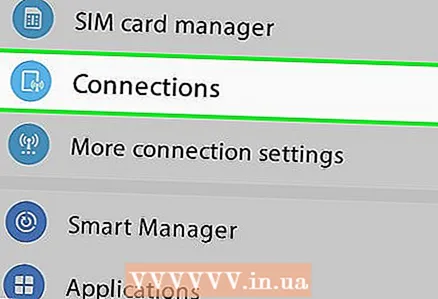 2 Click on Connections. It's near the top of the settings page.
2 Click on Connections. It's near the top of the settings page. 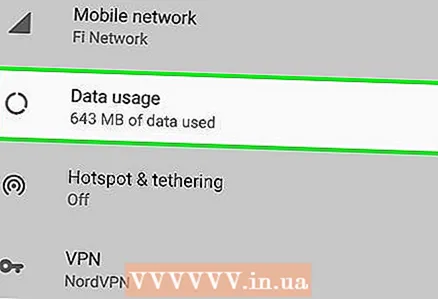 3 Tap Data transfer. You will find this option in the middle of the page.
3 Tap Data transfer. You will find this option in the middle of the page. 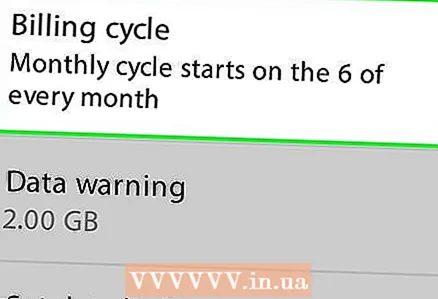 4 Click on Billing cycle and warning. It's in the middle of the page.
4 Click on Billing cycle and warning. It's in the middle of the page. 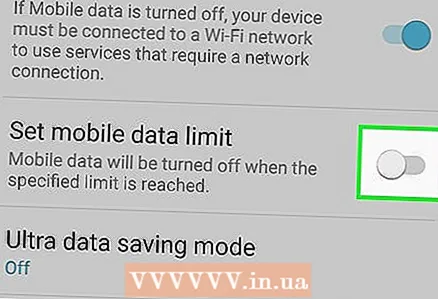 5 Click on the blue slider next to "Traffic Limit"
5 Click on the blue slider next to "Traffic Limit"  . It will turn gray
. It will turn gray  .
. 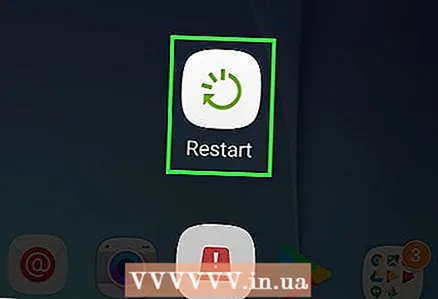 6 Follow the instructions on the screen. If you are prompted to confirm your decision or to restart your device, do so. Now the device will not notify you about the traffic limit.
6 Follow the instructions on the screen. If you are prompted to confirm your decision or to restart your device, do so. Now the device will not notify you about the traffic limit.
Method 3 of 3: How to reduce traffic consumption
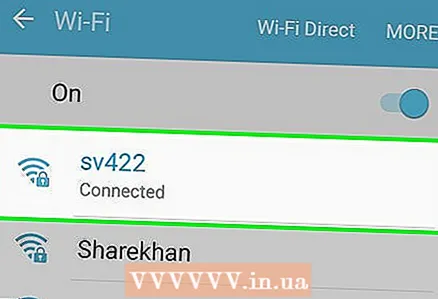 1 Connect to wireless networks whenever possible. In this case, mobile traffic will not be consumed. If your device is not connected to a wireless network, try not to watch streaming video or listen to online music.
1 Connect to wireless networks whenever possible. In this case, mobile traffic will not be consumed. If your device is not connected to a wireless network, try not to watch streaming video or listen to online music. 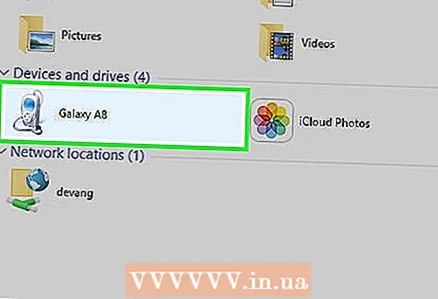 2 Download and transfer files on your computer. If you download a lot of files to your device, your mobile traffic will be used up very quickly. Therefore, download the files to your computer and then copy them to your Android device.
2 Download and transfer files on your computer. If you download a lot of files to your device, your mobile traffic will be used up very quickly. Therefore, download the files to your computer and then copy them to your Android device. - connect your device to your computer using a USB cable;
- on your Mac, first install Android File Transfer.
- on the device, open the notification panel and tap the "USB" option;
- select "Transfer files" and the device will appear on the computer as a removable disk;
- copy the files downloaded to your computer to the appropriate folders on your device.
- connect your device to your computer using a USB cable;
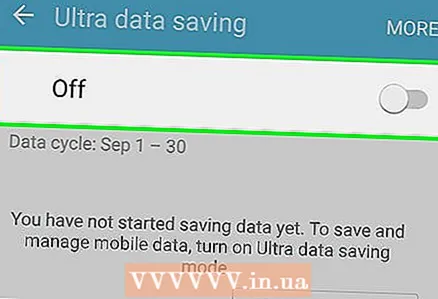 3 Turn on traffic savings if you use the Chrome web browser regularly. The Traffic Saver feature compresses the data (on Google servers) and then sends it to your device. This does not significantly increase the loading time of web pages, but it saves a lot of mobile traffic.
3 Turn on traffic savings if you use the Chrome web browser regularly. The Traffic Saver feature compresses the data (on Google servers) and then sends it to your device. This does not significantly increase the loading time of web pages, but it saves a lot of mobile traffic. - launch Chrome on your Android device;
- click "⋮" in the upper right corner;
- Tap Settings> Traffic Saver;
- tap the slider next to "Save traffic".
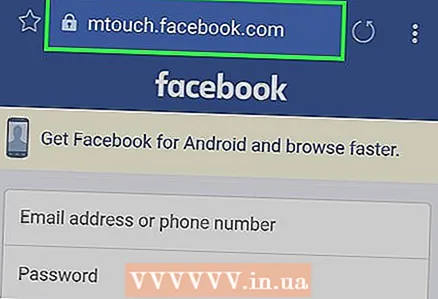 4 Use apps that consume less bandwidth. Some applications exchange large amounts of data. One such application is Facebook, which can exchange hundreds of megabytes of data in a short amount of time, even if you are not using it.
4 Use apps that consume less bandwidth. Some applications exchange large amounts of data. One such application is Facebook, which can exchange hundreds of megabytes of data in a short amount of time, even if you are not using it. - We recommend using the Facebook mobile site, which consumes significantly less traffic. However, some functions of the application will be unavailable.
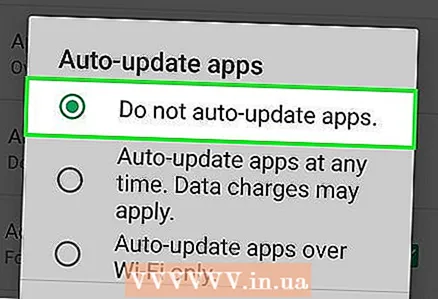 5 Update applications only over the wireless network. Downloading updates consumes traffic quickly. Therefore, update applications manually:
5 Update applications only over the wireless network. Downloading updates consumes traffic quickly. Therefore, update applications manually: - open the Play Store;
- click "☰" in the upper left corner;
- Tap Settings> Auto Update Apps;
- click "Never".
- To update applications while your device is connected to a wireless network, select My Apps & Games from the menu, and then click Update for the desired application.
Tips
- You may have an app from your mobile operator installed on your device that notifies you of the traffic limit. If so, turn off notifications in this app.
- On most Android devices, the traffic limit can be set in the Mobile Traffic or Billing Cycle menu. If you set a value higher than the real traffic limit, you will not receive notifications.
Warnings
- Some versions of the Android system have a bug that causes many traffic limit notifications to be received, even if the traffic consumption is not close to the limit. In this case, update Android to the latest version to get rid of the error.



